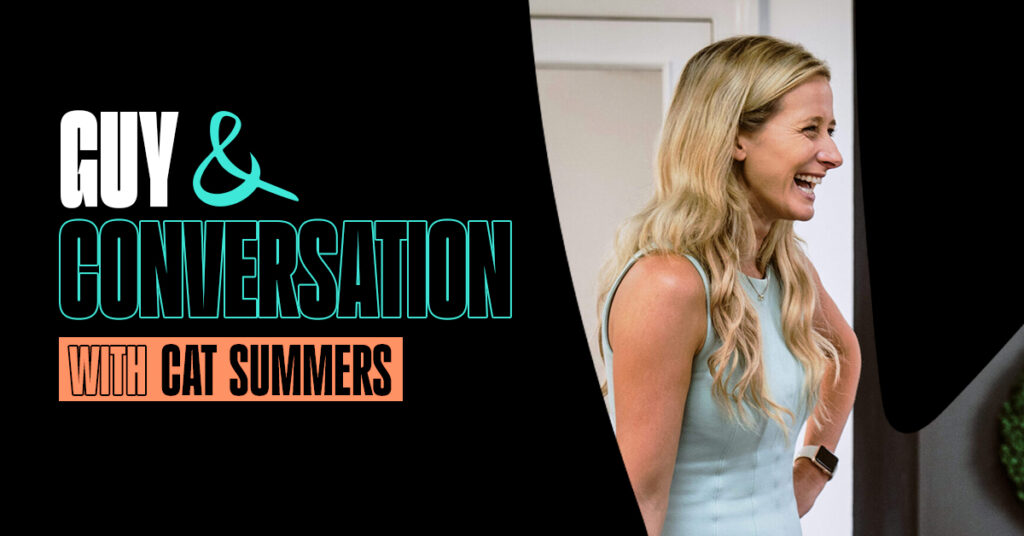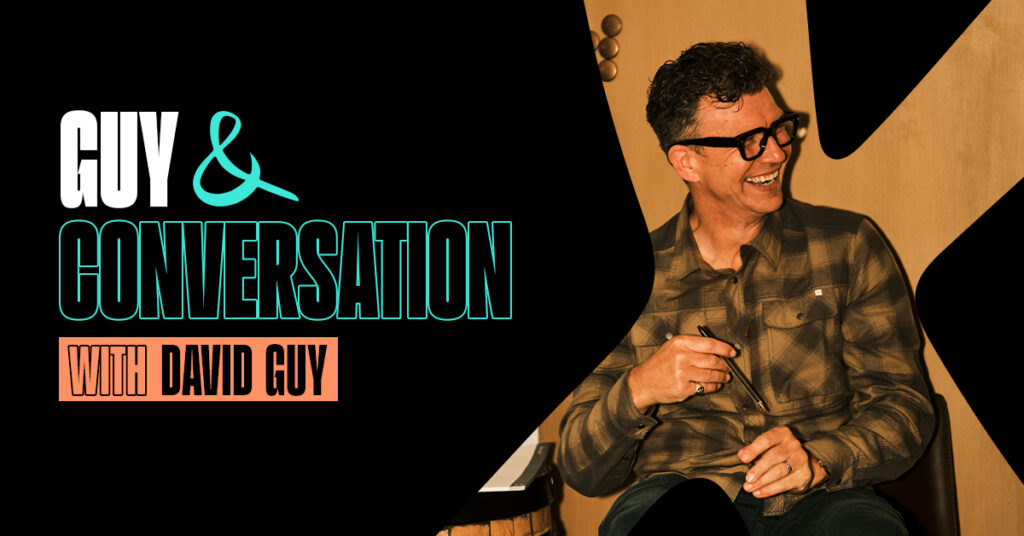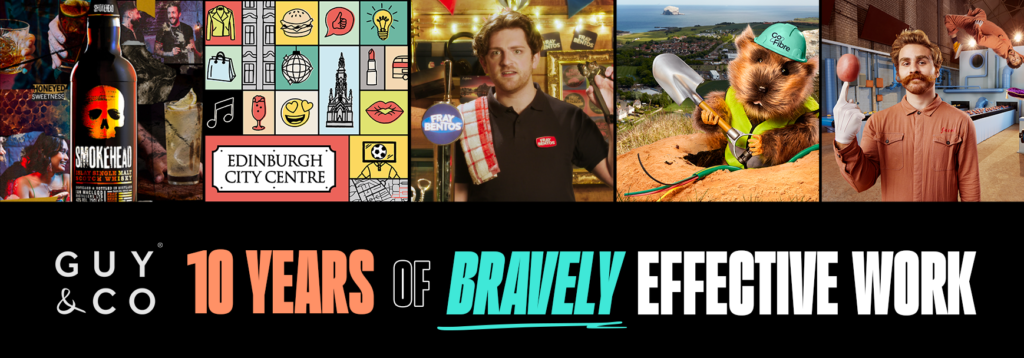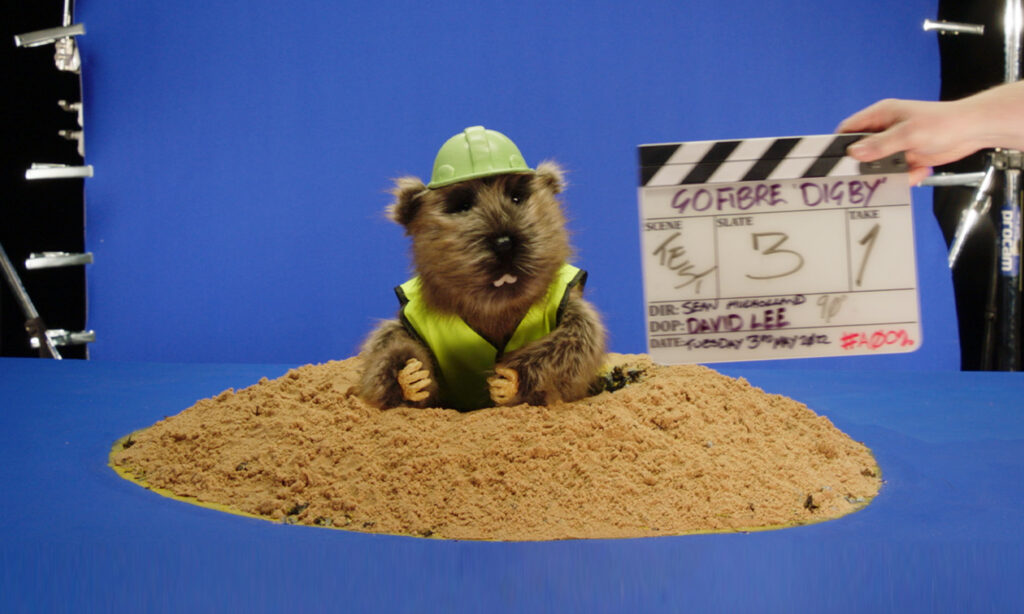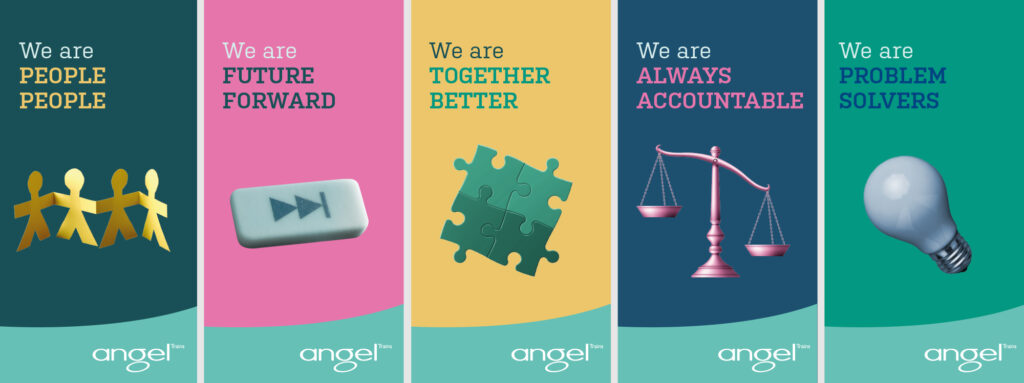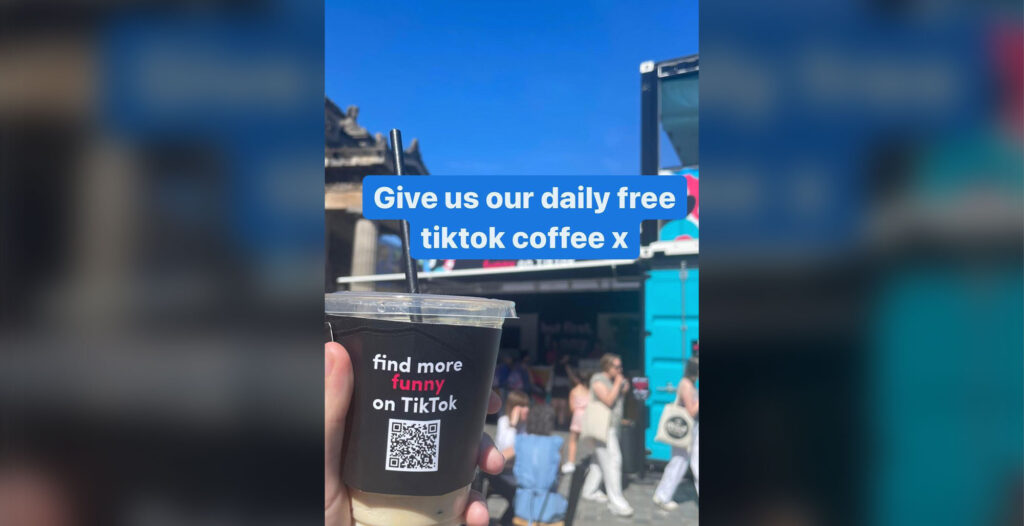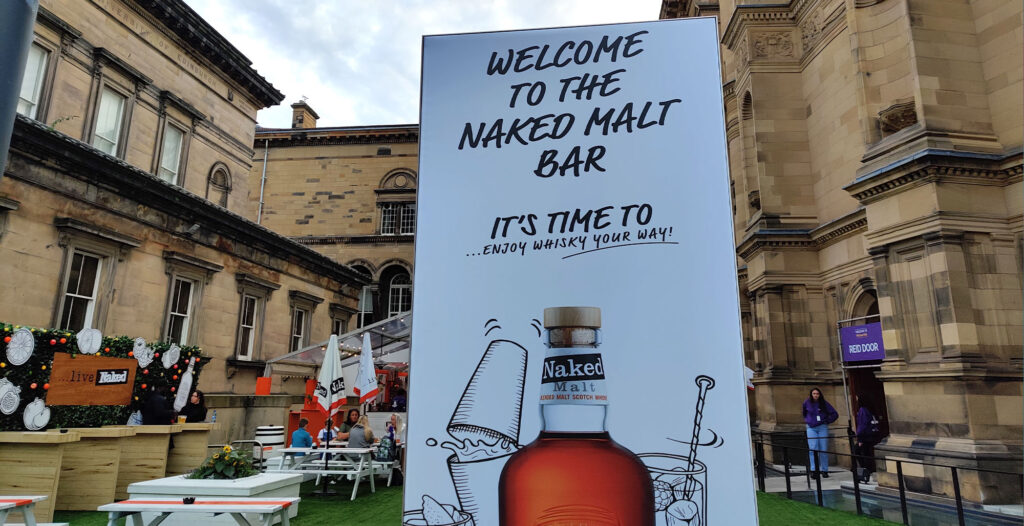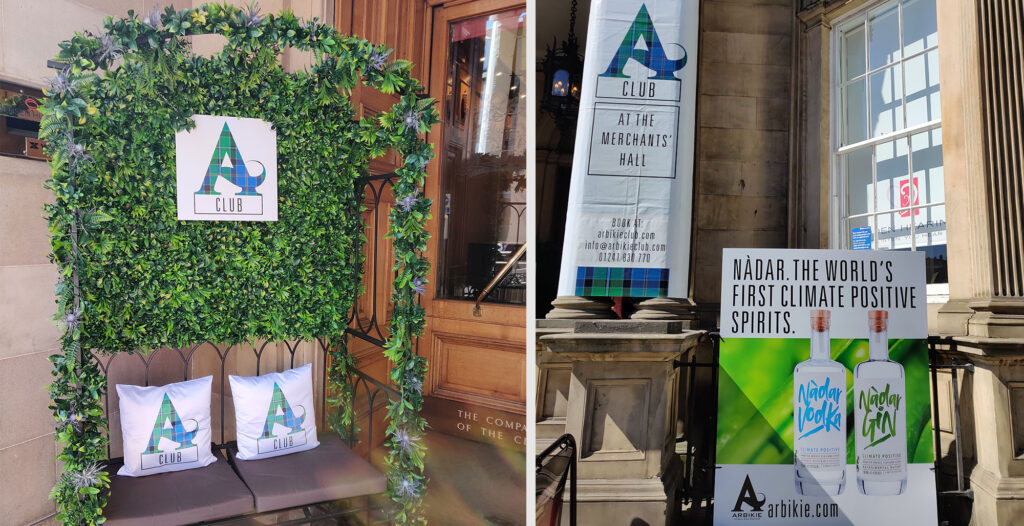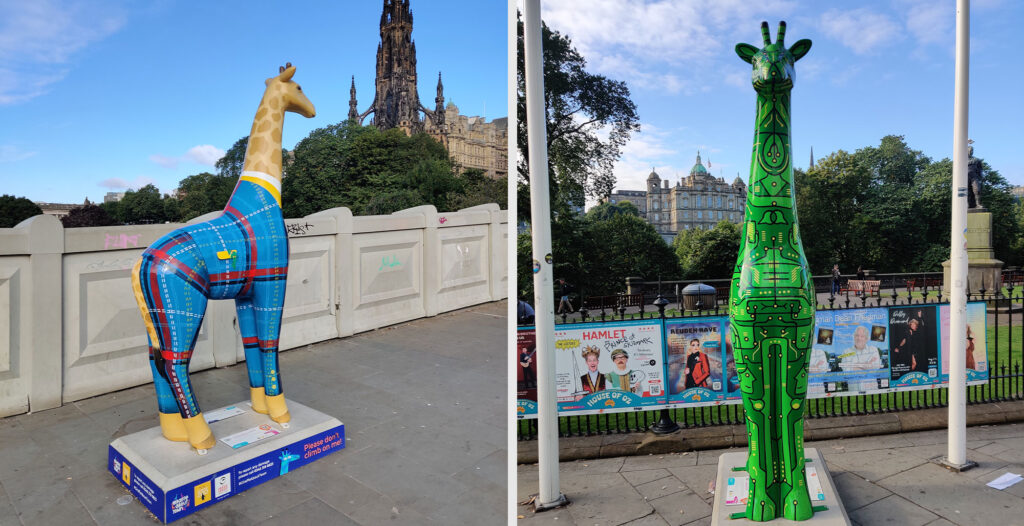We love our clients. They’re great. One of those lovely clients is The Exeter, a health and life insurance company whose purpose is to provide more people with more peace of mind, in a more uncertain world.
We asked their Head of Marketing, Shelley Walker if she’d do an interview with us to tell us more about her role, The Exeter and what exciting stuff we get to work on together. Here’s how it went…
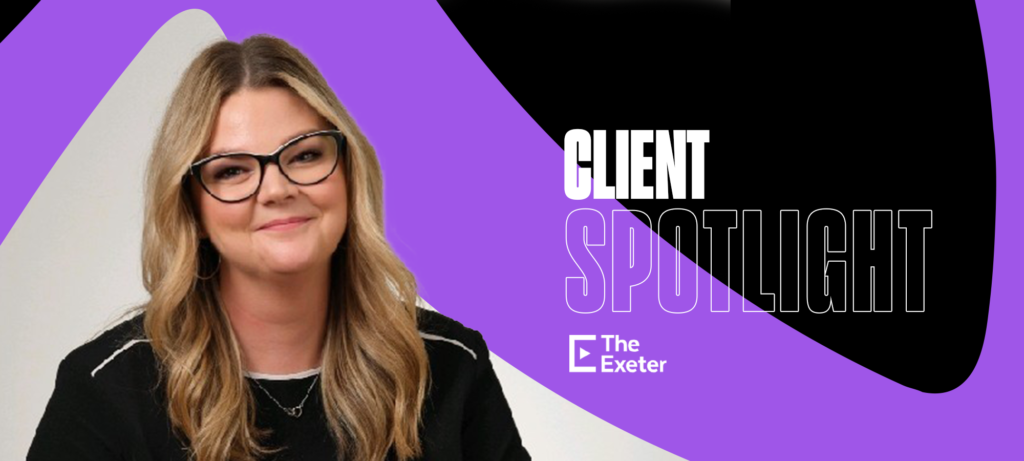
Tell us a bit about yourself and your journey to becoming the Head of Marketing at The Exeter?
Hello! I live in Edinburgh with my partner, David, and dog, Iggy. And most of the time you’ll find me on dog walks down porty beach, or out and about with my friends and family.
I started my career in Financial Services at Bright Grey (which would later become Royal London) in the customer service team supporting clients with their protection policies. Before this I had little exposure to the world of life insurance or income protection, but I quickly got a good understanding of how powerful these types of policies could be to our customers and their families. I started to become more interested in the communications side and, as I was speaking to customers day in and day out, I began to see ways we could improve how we engage with them. An opportunity came up to join the Marketing team as a coordinator and I leapt at the chance! Having no prior experience or training I felt this was an incredible opportunity to get a good grounding and see if this really was the right path for me. Turns out I absolutely loved it! Getting to be creative and exploring different ways of communicating with our financial advisers and end customers really struck a chord with me. After a few years in the role I was promoted to a Consultant. I then moved to another insurer, Guardian, for a year where I worked in Sales covering Scotland and Northern Ireland, before moving back to Royal London to take the role as Marketing Manager. After a few years I made a sideways move to The Exeter and after a year, I was promoted to Head of Marketing. A year on in the role and I absolutely love it. I’m lucky to be surrounded by incredibly talented and dynamic people, both in the Marketing team and also in the Leadership team. A marketer’s dream is working for a company with a strong purpose and focus which allows them to create a clear marketing strategy. So, I’m delighted to be in that position.
My career path has involved trying different roles, sideways moves, and doing a lot of “on the job” learning. I never had any Marketing qualifications, but instead learned through experience and various courses along the way. Whilst that doesn’t work for everyone, it does show if you’re willing to put in the hard work and take chances it’s possible to go from zero experience to a Head of Marketing in less than ten years. So, if you’re thinking about exploring something new but feel you’ve not got the qualifications, my advice is just go for it! What do you have to lose!
What do you love most about your role at The Exeter?
There’s a fantastic culture at The Exeter that promotes empowerment, accountability, and collaboration. And as the Head of Marketing, I’ve never felt so capable of making positive change, being heard, and that my opinion genuinely matters. We’re a small company with under 250 employees and 8 of those make up the Marketing team. Having worked in bigger corporates, I’d say there is a real advantage to working at a company of this size. Not so much a small cog in a big wheel! I really have the opportunity to influence the business, positioning marketing as a strategic function – not just a team that provides pens, notebooks, or a flashy sales aid! I love being able to say that in my role, and in our business, we put our end customers at the heart of everything we do. This isn’t just something we put in our business plan or on our website. We practise this day in, day out. We make decisions based on customer preference, behaviours, attitudes, needs and wants. We’re able to work across the business to create proper segmentation, agree our target markets, and enhance our positioning. And of course, I get to work with awesome agencies like Guy & Co!
What are some of the unique industry challenges and opportunities you and your team face?
As a company that sells personal protection and healthcare products, we’re definitely not short of industry challenges at the moment! Cost of living crisis and NHS waiting times has had a huge impact on what we do. And then we have regulation to consider, competing against household brands, and general mistrust for financial services. I think one of the biggest challenges we face is helping consumers understand the complexity of insurance products. Overtime insurance products have improved to suit the changing needs of the customer. Which is great. But it also means products become more intricate and require more explaining. I believe we have a huge opportunity to position our products in a much more simple and meaningful way. For example, nobody wants a mortgage – they want the home that goes with it. Nobody wants to pay £20 a month for insurance – they want the peace of mind that if they were too ill to work that they’d still be able to pay their bills, support their family, and be stress-free while they recover. Positioning these products in a consumer friendly way throughout our marketing material is absolutely crucial.
What recent achievements or milestones is your company most proud of?
I’m particularly proud of our recent member segmentation work that we collaborated with the Guy & Co team on. For any business to be successful it’s so important they’re customer oriented. And to do that you need to live and breathe your customer. Understand their wants, needs, attitudes… pre-empting their next step. To help us do this, we underwent a project to overlay our customer demographic data with various third-party data to create six core segments that make up our membership. Our membership profiles detail things like digital confidence, attitudes to different financial products, hobbies and interests, and what the future looks like for these customers. This has allowed us to position ourselves in a truly personal way to our members, serving them with the most relevant messages and support, improving customer outcomes and creating brand loyalty. We’ve only just really scratched the surface on this work and I’m really excited to see what else we’re capable of doing as a business with this new insight.
What were the key factors in choosing us as your creative partner?
Having seen previous work from Guy & Co I knew they were bold, brave, and their campaign execution was always slick and professional. But for me it’s more than that. When I work with a creative agency I need it to feel like a partnership. A two-way relationship where you feel like you can be open, honest, and constructively challenge each other. It’s about cultural compatibility. And that’s exactly what we’ve found in the partnership between Guy & Co and The Exeter. You can see our vision, understand our identity, and share the same enthusiasm and passion as we do for helping our customers. Strong communication, collaborative ideation, and energy are qualities I value the most in our partnership.
What’s the best piece of professional advice you’ve ever received?
When I first became a people manager I attended a ridiculous amount of “leadership courses” that talked about the importance of strategic planning, and communication. But nothing around emotional intelligence. I explained to my line manager at the time that I wasn’t getting it… surely there’s more to being a leader than just good planning. And he gave me advice that has stuck with me since. “Be the leader you always wished you had.”
I’m very fortunate to say I’ve had some great leaders and line managers over my career that have helped me get to where I am today. But I’ve also seen some not so great leaders. And they’re the people who have shaped my leadership style more than anything. Yes, being a good leader is about clear vision, transparency, communication, planning… But for me it’s also about being human. Showing empathy, integrity, flexibility, understanding and compassion. I’m much more likely to be productive and positive for a manager that I feel understands me, empowers me, and is available. So that’s what I try to be for my team.
If you could describe our agency in three words what would they be?
Fearless, dynamic, fun.
Where can people follow your company’s journey or get in touch for more information?
We’re working on some big things at The Exeter so follow our journey on LinkedIn or through our website. Or connect with me directly!



